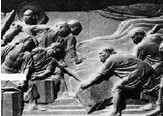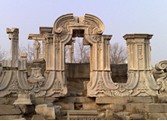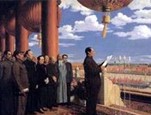In 1880, Sir Joshua Waddilove, a Victorian philanthropist, founded Provident Financial to provide affordable loans to working-class families in and around Bradford, in northern England. This month his company, now one of Britain’s leading providers of "home credit"— small, short-term, unsecured loans—began the nationwide rollout of Vanquis, a credit card aimed at people that mainstream lenders shun. The card offers up to £ 200 ($ 380) of credit, at a price: for the riskiest customers, the annual interest rate will be 69%.
Provident says that the typical interest rate is closer to 50% and that it charges no fees for late payments or breaching credit limits. Still, that is triple the rate on regular credit cards and far above the 30% charged by store cards. And the Vanquis card is being launched just when Britain’s politicians and media are full of worry about soaring consumer debt. Last month, a man took his own life after running up debts of £ 130000 on 22 different credit cards.
Credit cards for "sub-prime" borrowers, as the industry delicately calls those with poor credit records, are new in Britain but have been common in America for a while. Lenders began issuing them when the prime market became saturated, prompting them to look for new sources of profit. Even in America, the sub-prime market has plenty of room for growth. David Robertson of the Nilson Report, a trade magazine, reckons that outstanding sub-prime credit-card debt accounts for only 3% of the $ 597 billion that Americans owe on plastic. The sub-prime sector grew by 7.9% last year, compared with only 2.6% for the industry as a whole.
You might wonder, though, how companies can make money from lending to customers they know to be bad risks—or at any rate, how they can do it legitimately. Whereas delinquencies in the credit-card industry as a whole are around 4%-5% , those in the sub-prime market are almost twice as high, and can reach 15% in hard times.
Obviously, issuers charge higher interest rates to compensate them for the higher risk of not being repaid. And all across the credit-card industry, the assessment and pricing of risks has been getting more and more refined, thanks largely to advances in technology and data processing. Companies also use sophisticated computer programs to track slower payment or other signs of increased risk. Sub-prime issuers pay as much attention to collecting debt as to managing risk; they impose extra charges, such as application fees; and they cap their potential losses by lending only small amounts ($ 500 is a typical credit limit).
All this is easier to describe than to do, especially when the economy slows. After the bursting of the technology bubble in 2000, several sub-prime credit-card providers failed. Now there are only around 100, of which nine issue credit cards. Survivors such as Metris and Providian, two of the bigger sub-prime card companies, have become choosier about their customers’ credit histories.
As the economy recovered, so did lenders’ fortunes. Fitch, a rating agency, says that the proportion of sub-prime credit-card borrowers who are more than 60 days in arrears (a good predictor of eventual default) is the lowest since November 2001. But with American interest rates rising again, some worry about another squeeze. As Fitch’s Michael Dean points out, sub-prime borrowers tend to have not just higher-rate credit cards, but dearer auto loans and variable-rate mortgages as well. That makes a risky business even riskier.
Which of the following is not mentioned as a way to reduce risks of credit card industry()
A. Charging their users a higher interest rate
B. Using computer programs to track their users
C. Imposing a higher application fee on their users
D. Offering smaller amounts of loans to their users
参考答案:B
解析:
[解题思路] 判断题。[B]选项偷换了原文的概念。文章第五段说“公司用先进的电脑程序追踪缓慢的付款和其他风险迹象”,但并不是要用电脑追踪信用卡使用者。




